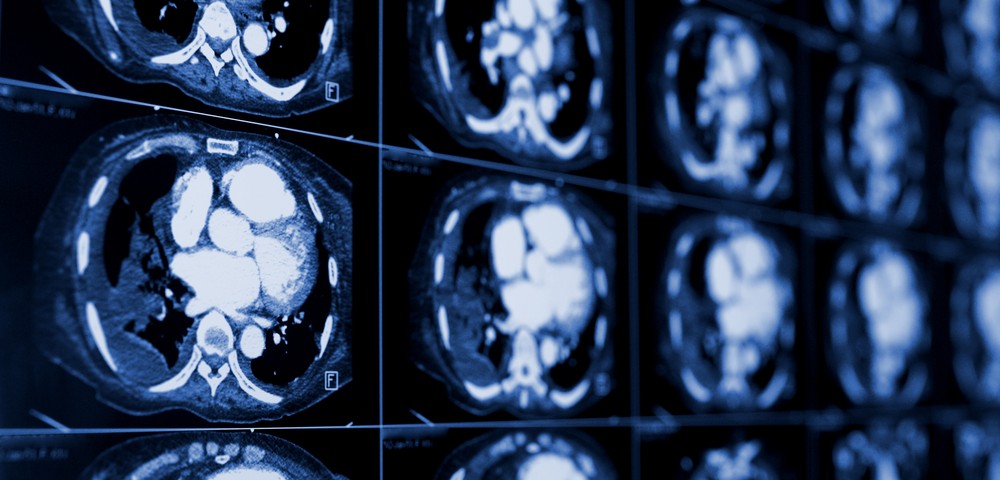Computed tomography (CT) is an appropriate method to diagnose chemotherapy-induced interstitial pneumonitis (CIIP) and to follow the pulmonary abnormalities of these patients when they discontinue chemotherapy, according to researchers at Cheongju University in South Korea.
In their study, “Thin-Section CT Characteristics and Longitudinal CT Follow-up of Chemotherapy Induced Interstitial Pneumonitis,” published in Medicine, researchers described the common features of CIIP in thin-section CT, which may help clinicians diagnose the correct interstitial pneumonia and manage patients with adequate therapies.
CIIP is an important complication of chemotherapy in cancer patients, occurring in about 10 percent of patients. Usually, CIIP appears as temporary respiratory symptoms that resolve after chemotherapy is discontinued. Diagnosing CIIP is important so that clinicians determine whether patients can continue the therapy or should be managed with withdrawal or steroid therapies when they experience acute deterioration.
Currently, diagnosing CIIP remains a challenge for both clinicians and radiologists, but the researchers thought that thin-section CT could be a promising method to identify particular features of CIIP that helped diagnose the particular subtype of interstitial pneumonia.
In fact, thin-section CT findings in CIIP patients had already been shown to reflect patterns that were characteristic of nonspecific interstitial pneumonia (NSIP), organizing pneumonia (OP), hypersensitivity pneumonitis (HP), diffuse alveolar damage (DAD), eosinophilic pneumonia, pulmonary hemorrhage, and obliterative bronchiolitis.
In this study, the team retrospectively enrolled 100 patients with confirmed CIIP between May 2005 and March 2015. Patients’ initial CT scan was reviewed by two independent chest radiologists and categorized into one of four CT patterns according to the guidelines for idiopathic interstitial pneumonia: NSIP, OP, HP mimicking desquamative interstitial pneumonitis, or DAD.
Participants with NSIP and OP patterns were then grouped and included in Group 1, and those with HP and DAD patterns were included in Group 2. The clinic-radiologic features of both groups were then compared.
The most common symptoms in these patients was shortness of breath, fever, and cough, with fever being more common in Group 2 patients, and cough in Group 1. Most patients withdrew from chemotherapy or started steroid treatment for CIIP.
Results revealed that HP was the most common pattern of CIIP, occurring in 51 percent of patients, followed by NSIP, OP, and DAD. The predominant distribution of lung patterns was bilateral and symmetric, regardless of the pattern. Follow-up CTs showed a decrease in the extent of total pulmonary abnormalities.
The medications that were more commonly associated with CIIP development were Rituxan (rituximab), Afinitor (everolimus), Blenoxane (bleomycin), and Taxodere (docetaxel).
Interestingly, Rituxan and Afinitor (drugs that target a particular molecule) were more likely to induce Group 2 patterns, and Blenoxane and Taxodere (cytotoxic drugs) were more likely to cause Group 1 patterns. Patients with Group 2 patterns also showed more complete resolution of their pulmonary abnormalities than those with Group 1 patterns.
“To our knowledge our study is the largest recent study to describe CT findings of CIIP with follow-up CT scans, according to patterns,” the authors wrote. “In conclusion, the diagnosis of CIIP should be considered if CT imaging reveals reversible diffuse, bilateral, and symmetric lung lesions accompanying chemotherapy.”


